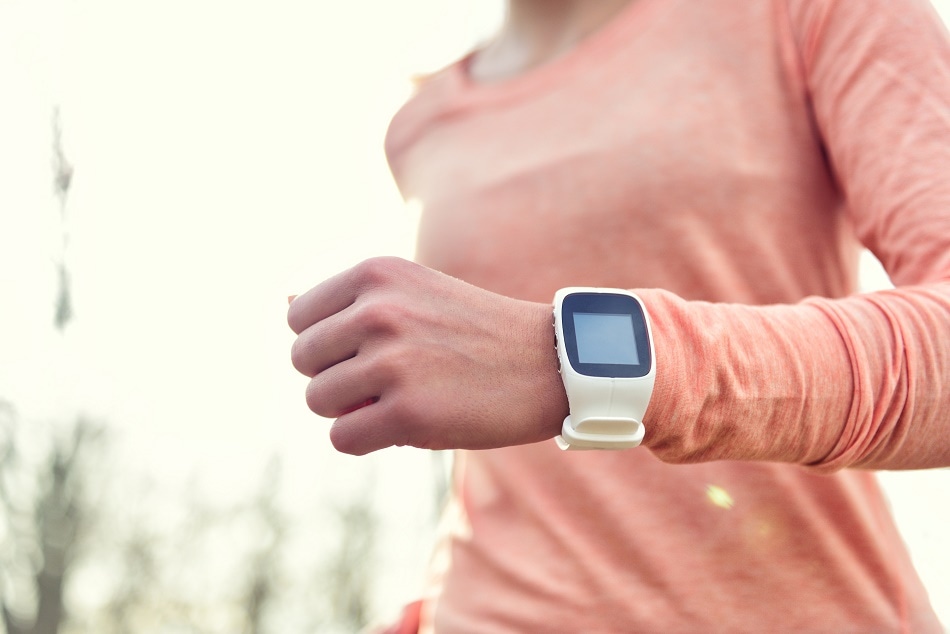
Image credit: Maridav / Shutterstock.com
Researchers at the ICFO (Institut de Ciencies Fotoniques) and the ICREA (Institució Catalana de Recerça i Estudis Avançats) in Barcelona have developed wearable fitness trackers based on optical detection that have the capabilities of tracking vital health data non-invasively.
The obstacle that wearable health trackers have faced is that the technologies that have been used previously have been constructed from rigid materials, and due to this their performance has been limited.
In order to enhance the capabilities of these trackers that have applications in healthcare, fitness and sport, and wellness, the team of scientists in Barcelona have developed a new breed of trackers that are both flexible and transparent, and work using graphene sensors using semiconducting quantum dots. The innovation has resulted in a tracker that is more sensitive, low energy consuming, and can be seamlessly integrated with other devices.
Current Devices are Limited
The skin presents a unique window to numerous vital signs of health. Electronic devices have been used for some time that make assessments on various signs of wellness through taking measurements from the skin. Those that use optical detection mechanisms are seen as the least invasive, and as a result there has been widespread market adoption.
Current optical detection devices use photoplethysmography to measure vital signs such as heart rate and arterial oxygen saturation, and in theory it could also be used to measure blood pressure, cardiac output and other vitals. Photoplethysmography works by transmitting a particular wavelength of light to the skin in order to detect how the volume of blood within the vessels changes.
Wearables that are already available on the market are constructed from rigid silicon photodiodes. Due to their lack of flexibility these sensors are not flush to the skin’s surface, meaning that the accuracy of data collection and the positions where the sensor can be worn are limited.
The problem to overcome in improving these kind of devices has been in developing sensors that are entirely flexible and transparent, as these properties would improve the interface between the skin and sensor in order to give a more accurate reading while being visibly discreet and appealing to a consumer market.
Innovative Use of Graphene
Since its recent discovery in its stable form, graphene has been the focus of much scientific research and development, with it encouraging advancements in all areas of science and technology, from aviation to supercomputers. It’s the unique properties of graphene that have made it so popular, for example, it is transparent and flexible while being incredibly strong and durable, it is a great conductor of electricity and is relatively cheap. These properties lend it to being the perfect candidate as a material for wearable sensors.
The team in Barcelona used graphene sensitized with semiconducting quantum dots within their photodetectors, resulting in sensors that have a high sensitivity and a high responsiveness as a result of built-in photoconductive gain. This photoconductive gain is key to moving wearable design forward, as it allows for data readouts to be moved away from the sensor, and transmitted seamlessly to other devices.
In the research published this month in Science Advances, the scientists presented numerous prototypes that incorporated the graphene based sensors onto flexible and transparent substrates, offering a variety of flexible wearables that have the capacity to monitor vital signs such as heart rate, arterial oxygen saturation, and respiratory rate to high levels of accuracy.
These sensors were also shown to consume small amounts of power due to their operation with ambient light, and in addition, the prototypes they created allowed for a wireless communication and transfer of power between the photodetectors and a smartphone, meaning that the wearable could function without a battery.
The innovation in wearables that has come out of the Barcelona team’s research offers a way to improve wearable technology so that it is not only more accurate, but that it appeals to the consumers through being discreet and lightweight. We can expect developments of these prototypes in the near future.
Disclaimer: The views expressed here are those of the author expressed in their private capacity and do not necessarily represent the views of AZoM.com Limited T/A AZoNetwork the owner and operator of this website. This disclaimer forms part of the Terms and conditions of use of this website.